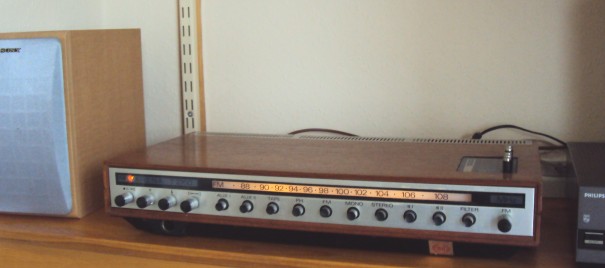
SOME NOTES
- about the Hede Nielsen / Bush 'Arena' T2600 & T2700 Stereo Receivers which may be of help to anyone working on these models

The T2600 & 2700 were manufactured by Hede Nielsen A/S at their Horsens, Denmark, factory, starting with the T2700 in 1970 followed shortly by the T2600, and ending when factory was taken over in 1971 by Rank-Bush-Murphy (UK) to become Rank-Arena A/S (1)
The T2600 is an AM/FM receiver with Long, Medium, 'Trawler' and 49metre shortwave bands, while the T2700 is a slimline FM-only receiver
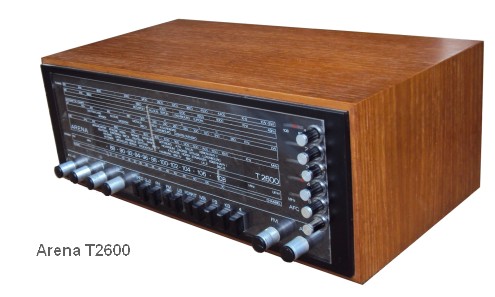
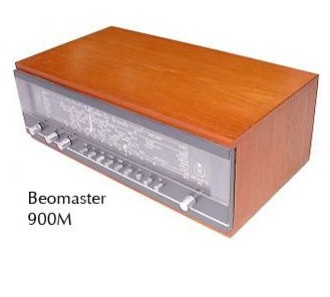
The T2600 is a stylistically close copy of the B&O Beomaster 900M tuner-amplifier, manufactured from 1964 - 1970 (2)(3)(4) BEOWORLD has a discussion of the 900M styling (2)
I understand that RBM quickly sold off the remaining stock of Nielsen product, with much being sold on by Comet in the UK, which is how I came to buy my T2600 in 1972, when I realised I could afford the £45 'special offer' from Comet
These Arena tuner-amplifiers had a quaintly old-fashioned construction compared with the contemporanous products from Japan, the Arena featuring multiple circuit boards and using the traditional tuned IF transformers, while the Japanese were already constructing complete tuner-amplifiers on large single PCBs and using ceramic IF filters. Early T2600 units had six separate PCBs with internal heatsinks, and used a conventional tuning capacitor (5)
The quasi-symmetrical audio output stage using NPN devices was and is normal practice in much commercial hifi equipment, although denigrated by audiophiles. The Nielsen circuit is easily modified to true complimentary-symmetry and I modified mine but I could not tell any difference, and that was back in the days when I could tell differences. The audio quality is very pleasing for a 'domestic' radio and I use mine daily as the main radio or as the amplifier for CD's or MP3's
SERVICING
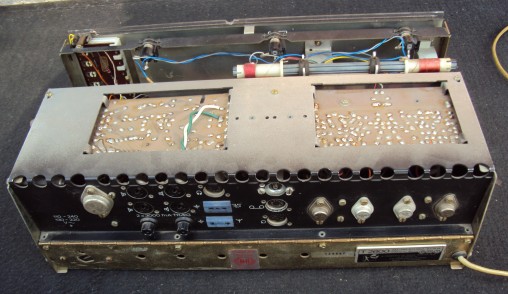
The later Nielsen construction used a series of 'Transmodul' plug-in stages mounted on B9G valve bases on a motherboard and held down with a Paxolin strip. Poor contacts on the Transmoduls probably account for the majority of faults on these receivers. A good cleaning and application of Servisol or similar silicone solvent lubricants, followed by much wiggling of Transmoduls will prove some degree of temporary improvement. Check visually for any hint of solder 'dry joints' around the valveholders
When evaluating one of these receivers, check first with an external audio input to the 'Tape' inputs to determine whether the PSU and Audio Amplifier boards are servicable. The Transmodul connections can be checked later
To keep these units in service, regular servicing and replacements are necessary. The construction makes access to some parts a challenging task, and considerable determination may be required for some repairs
Light bulbs are the first thing to fail, and even though the supply is only about 5.8V emf with a series resistor, small bulbs will fail within about ten years. Only the 'tubular bulb' MES types will fit properly, and these are now becoming too recherché in this age of LED lighting, so this decade's replacement on mine will be with LEDs and will not need repeating this century. I recommend replacement of all three by one small bridge rectifier feeding three clear white, wide angle LEDs of 5mm size with individual current limiting resistors
The electrolytic capacitors are of course subject to failure over the decades and regular replacements will be needed. Ideally all electrolytics would be replaced prophylactically with components of the best quality - I hold the Vishay (formerly Philips) range in high esteem, the 80° axial series being suitable for use here

One inevitable failure that will afflict the T2600 and most European tuners of this period is that the tuning will seize up due to the use of the otherwise excellent Hopf airspaced tuning capacitors. In the later models the FM tuning is by varicaps controlled from a potentiometer or preset and only the AM tuning will be affected by this problem, and the FM-only T2700 is varicap-tuned
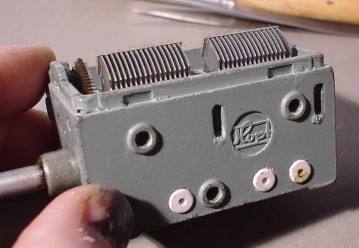
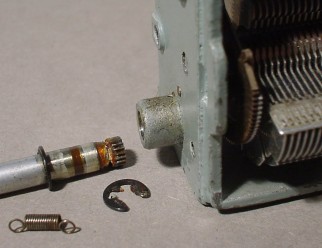
Servicing information - schematics and PCB layouts - is available in this zipfile - 1.6MB
LINKS
1) Hede Nielsens Fabrikker (Danish language)
2) BEOWORLD.org History of the Beomaster 900M
3) T2700 images Radiomuseum.org
4) Radiosiden.dk used to have some T2600 images
5) Early T2600 in the 'pfpardi collection'